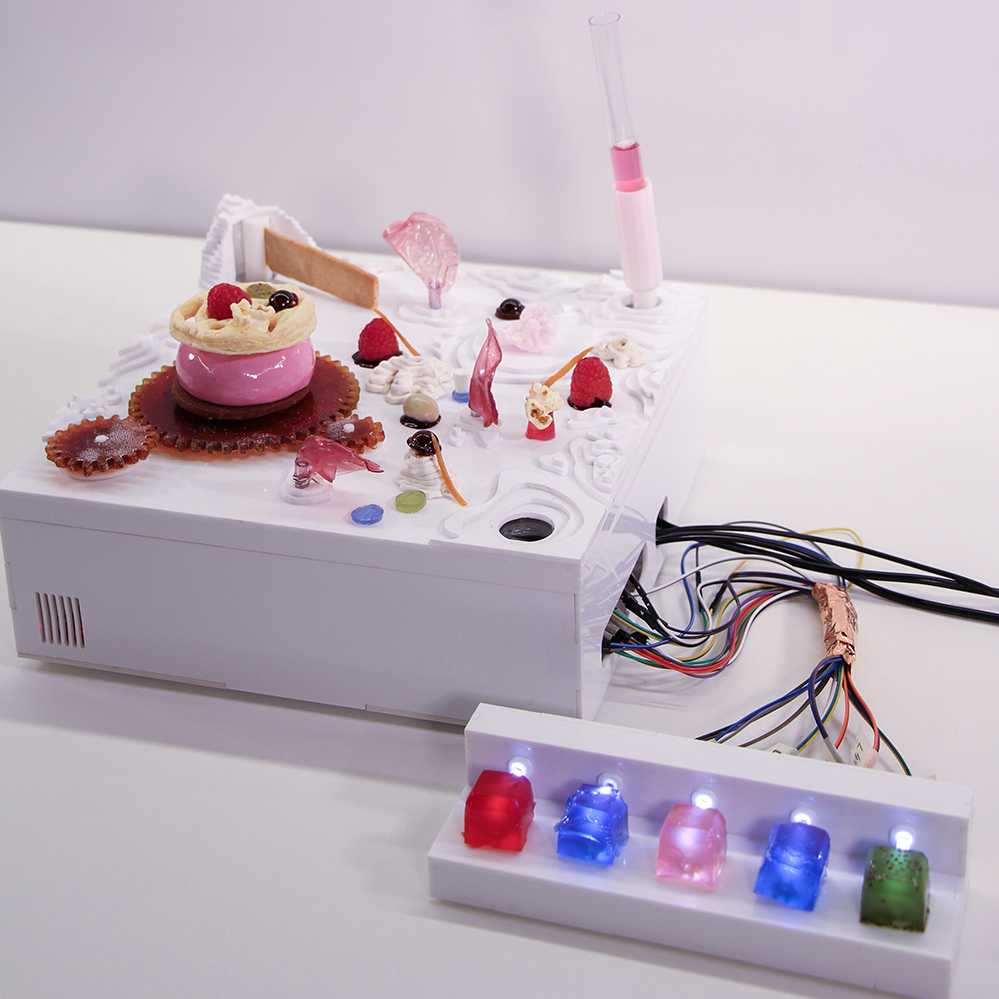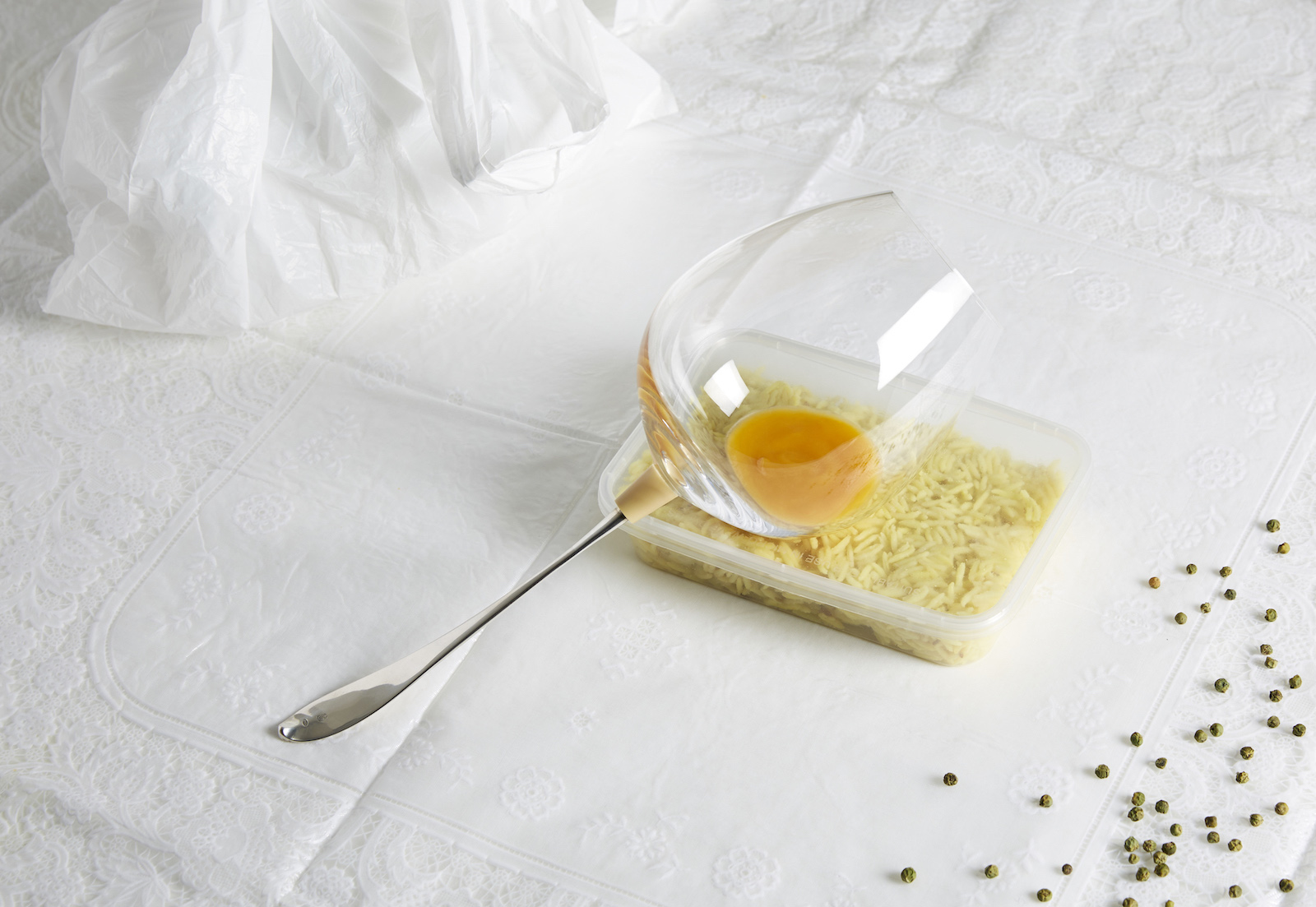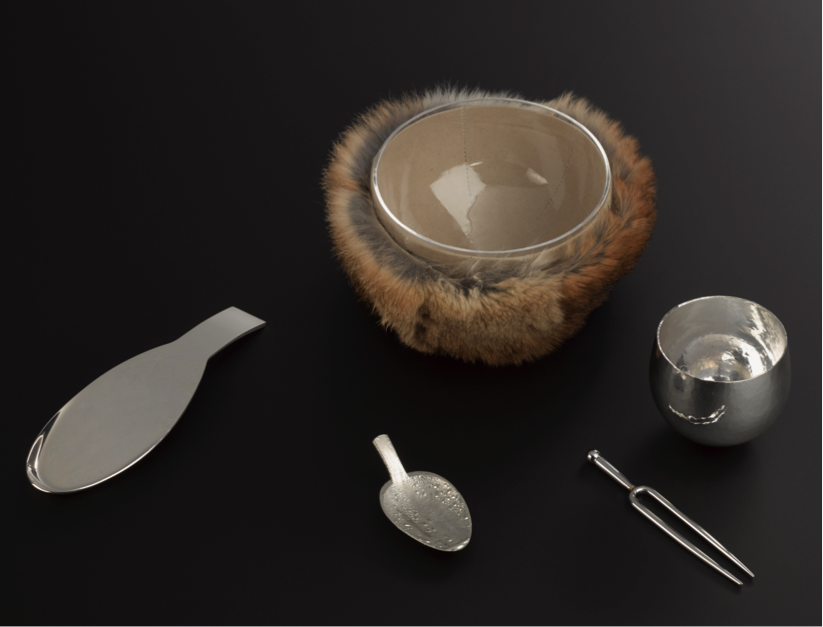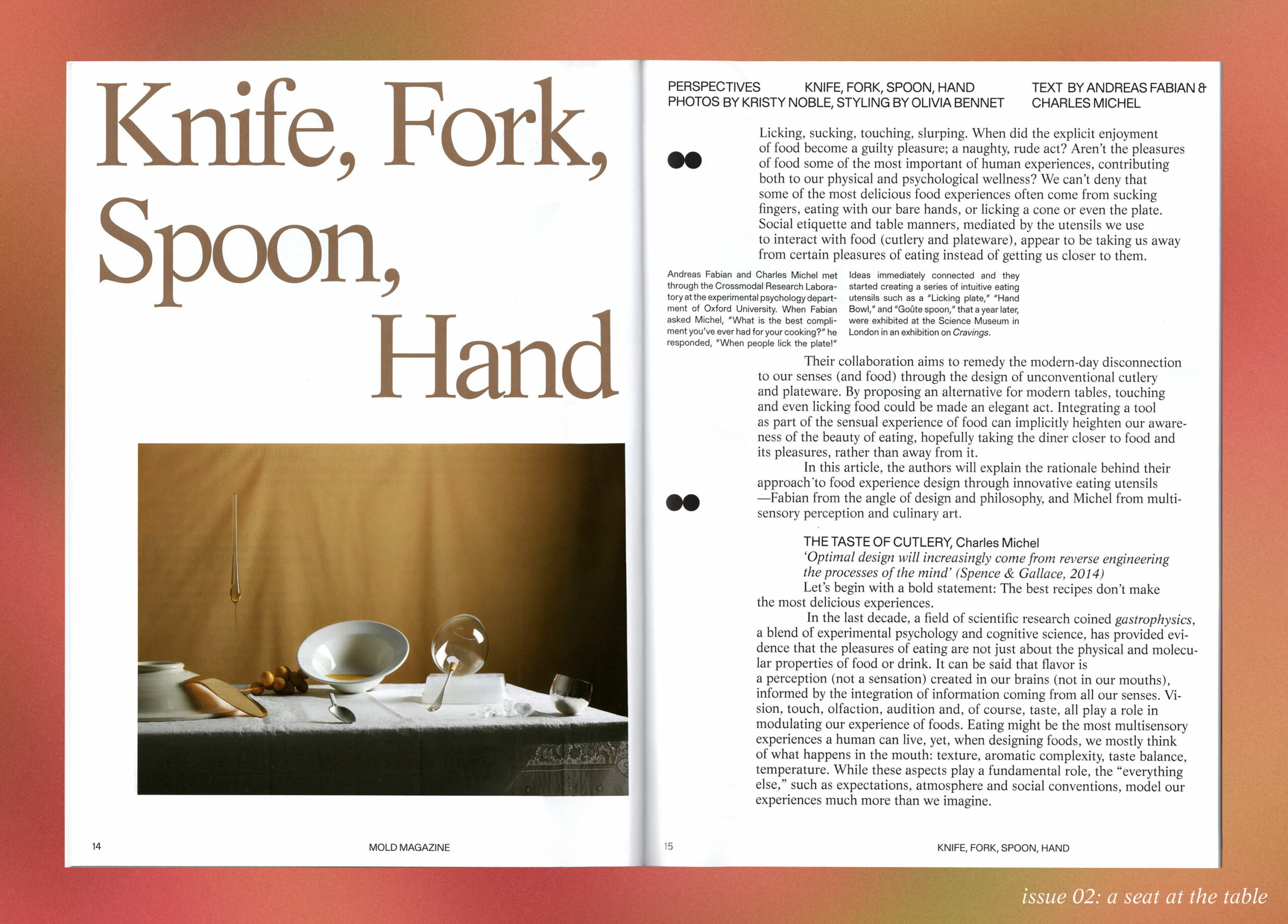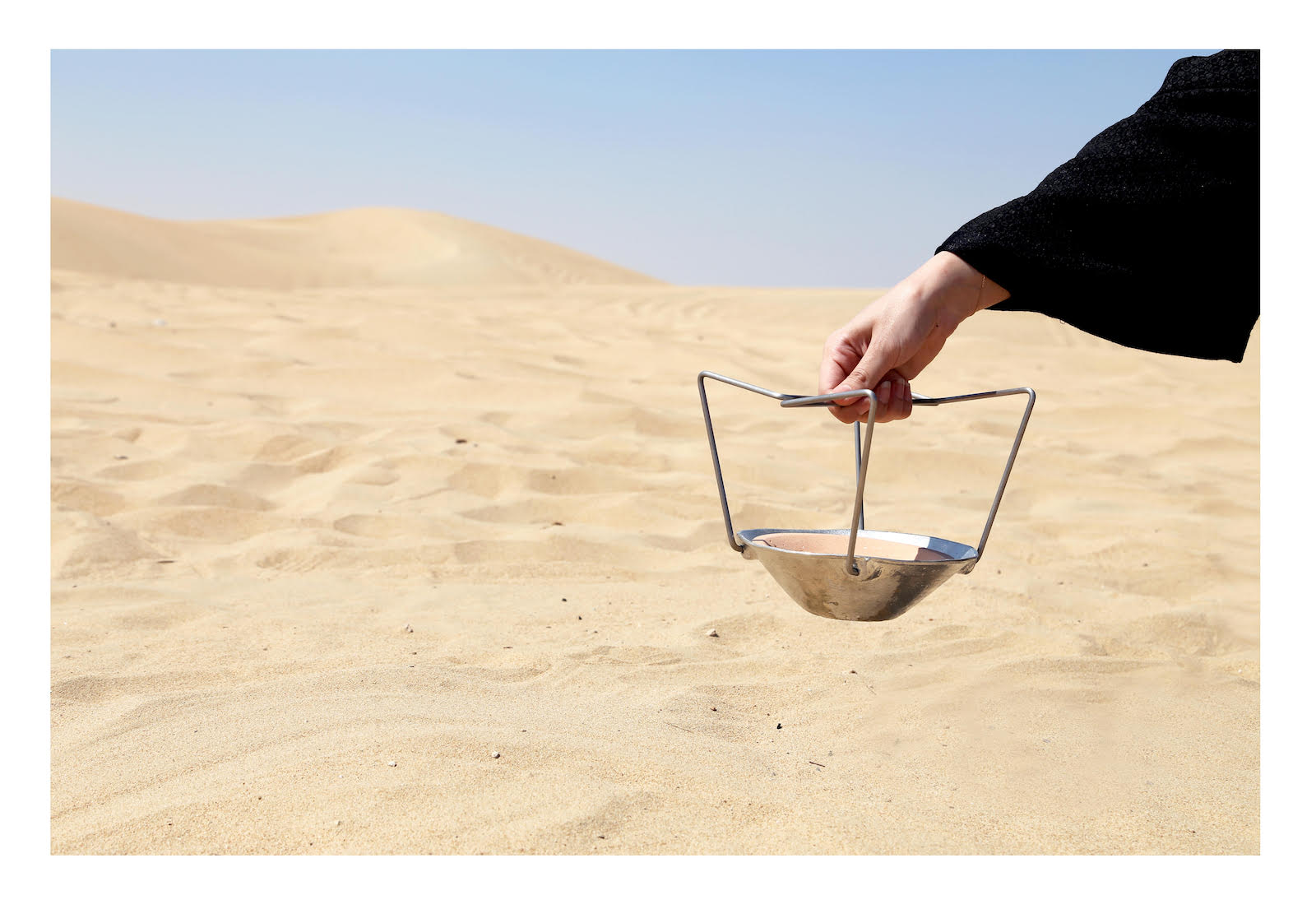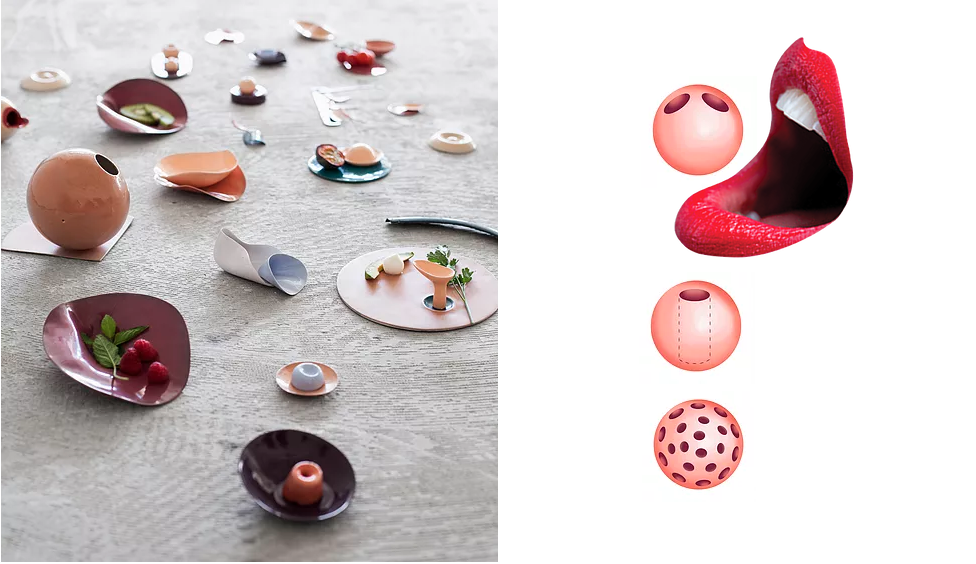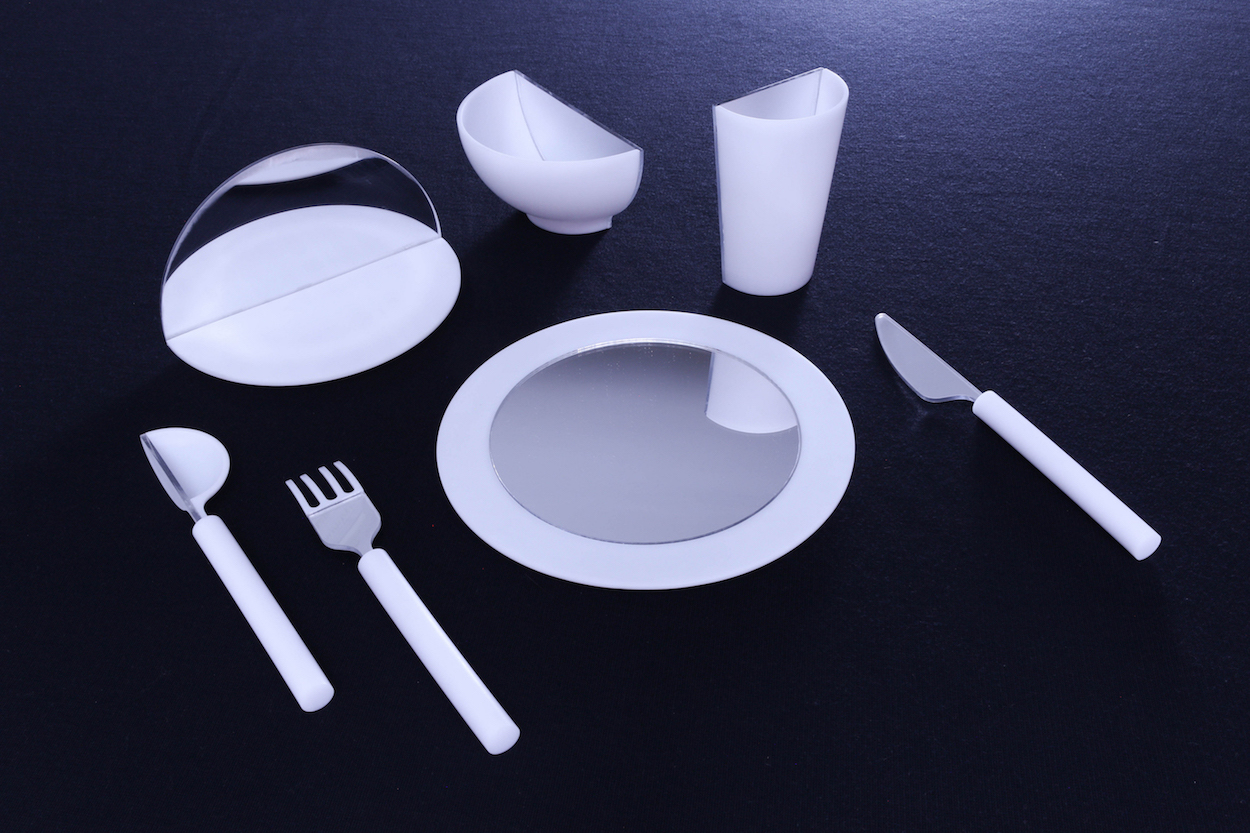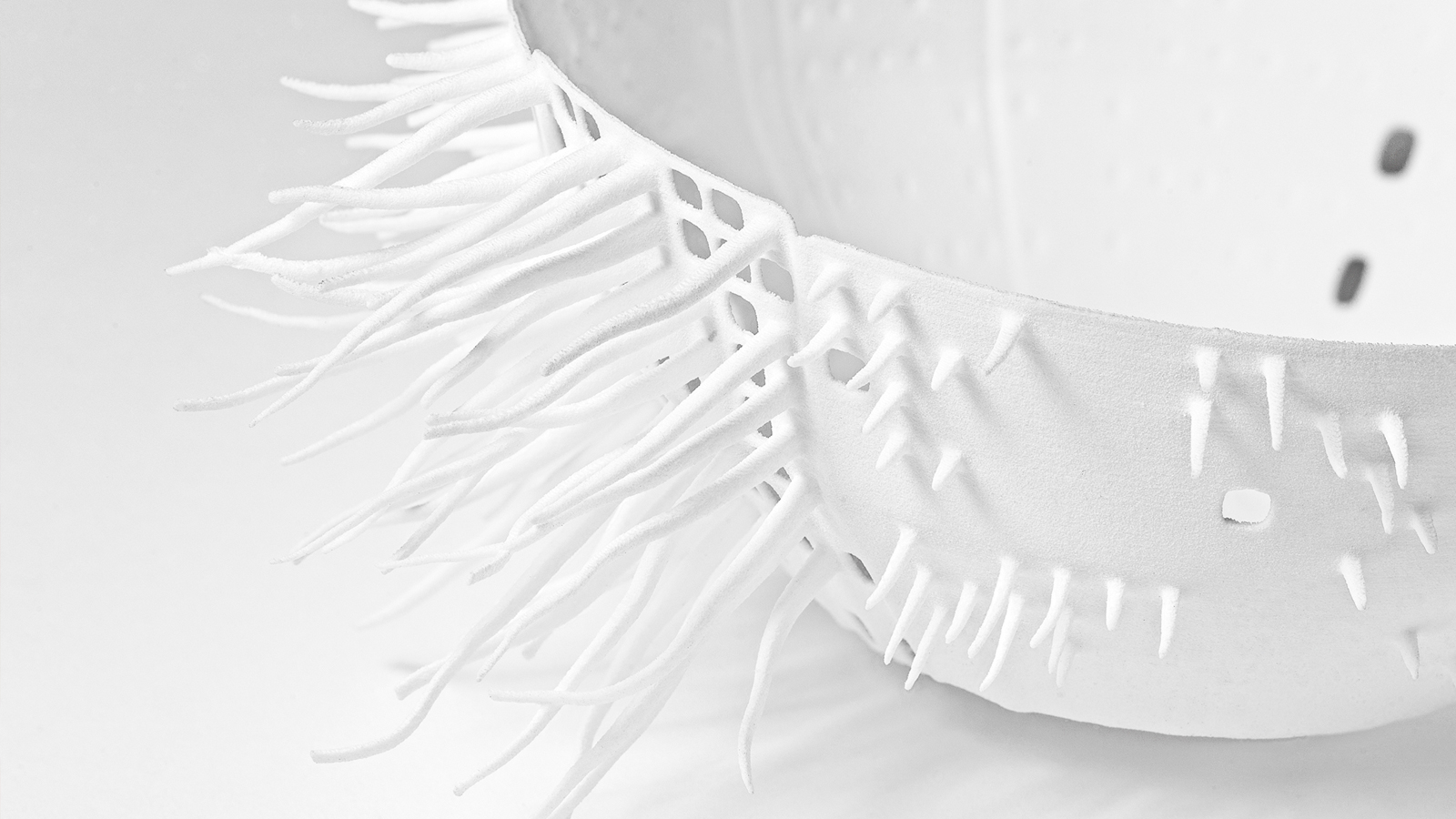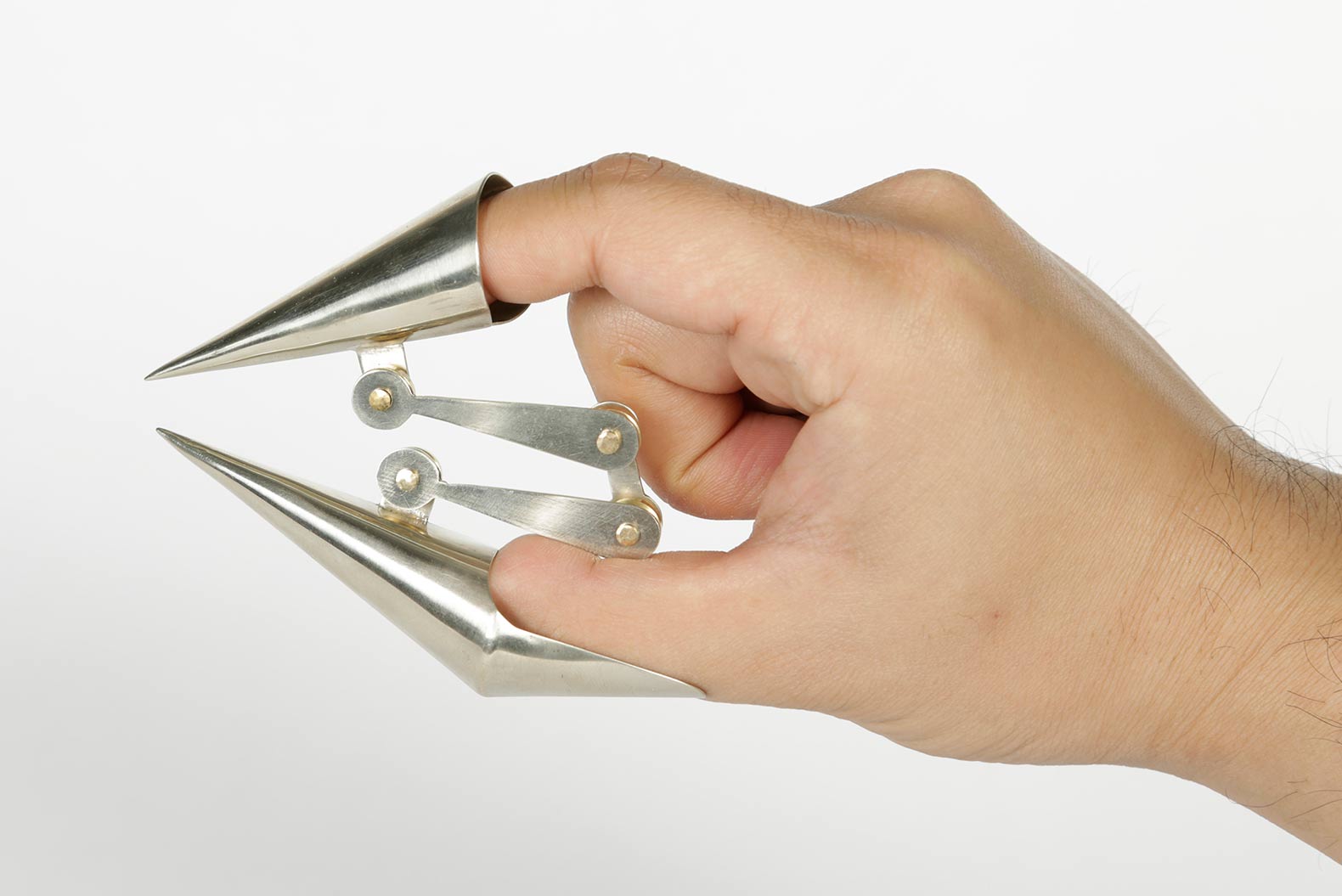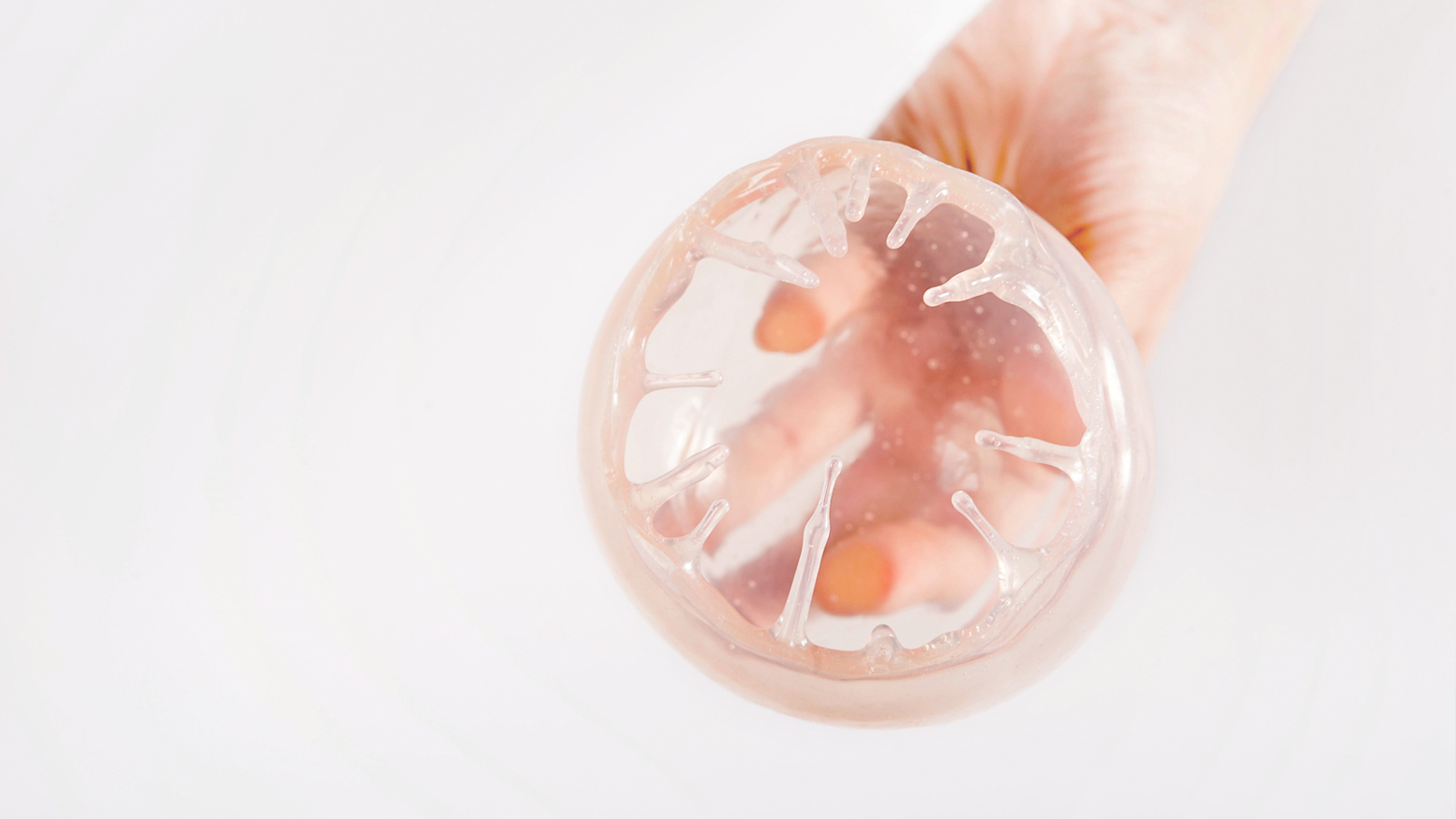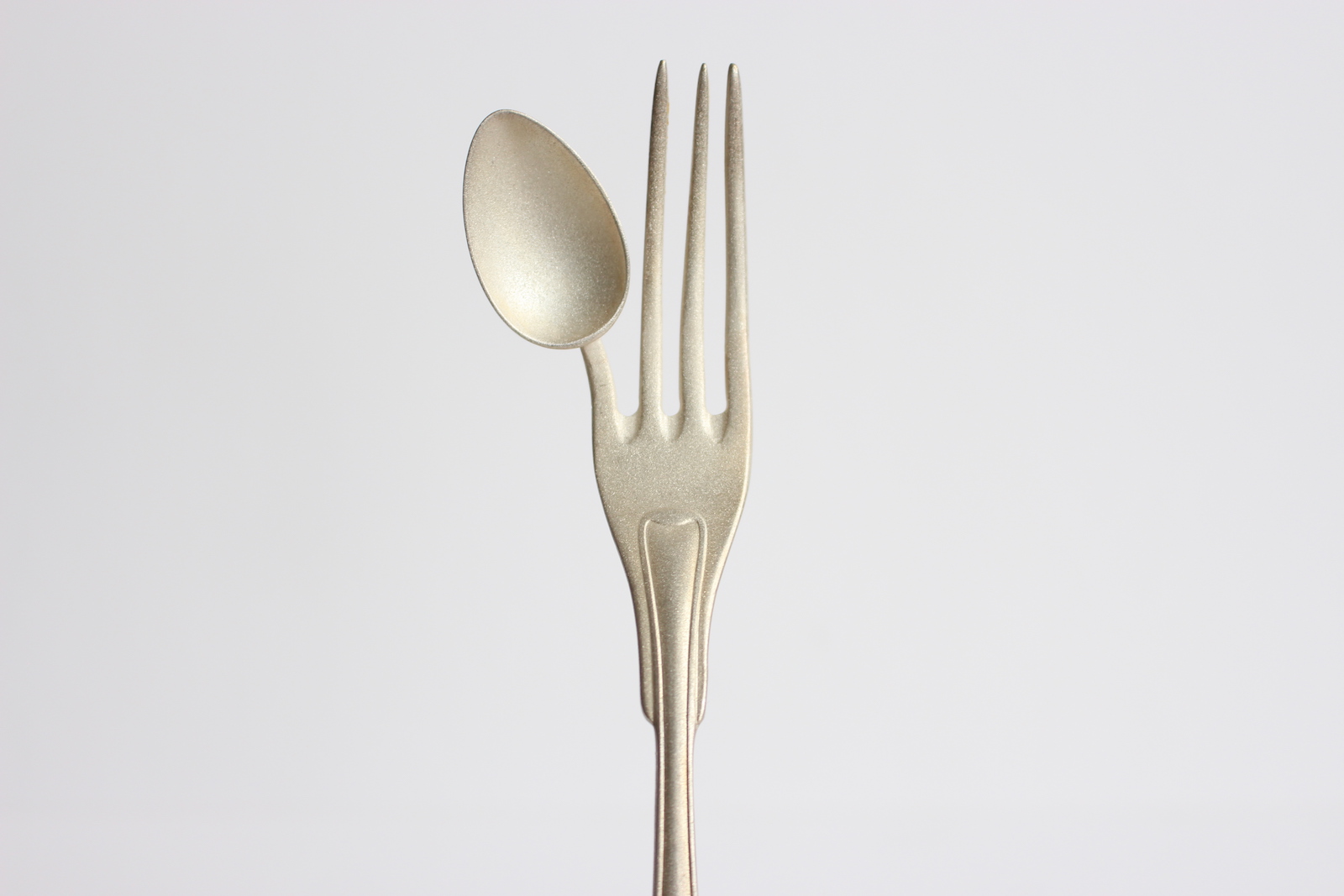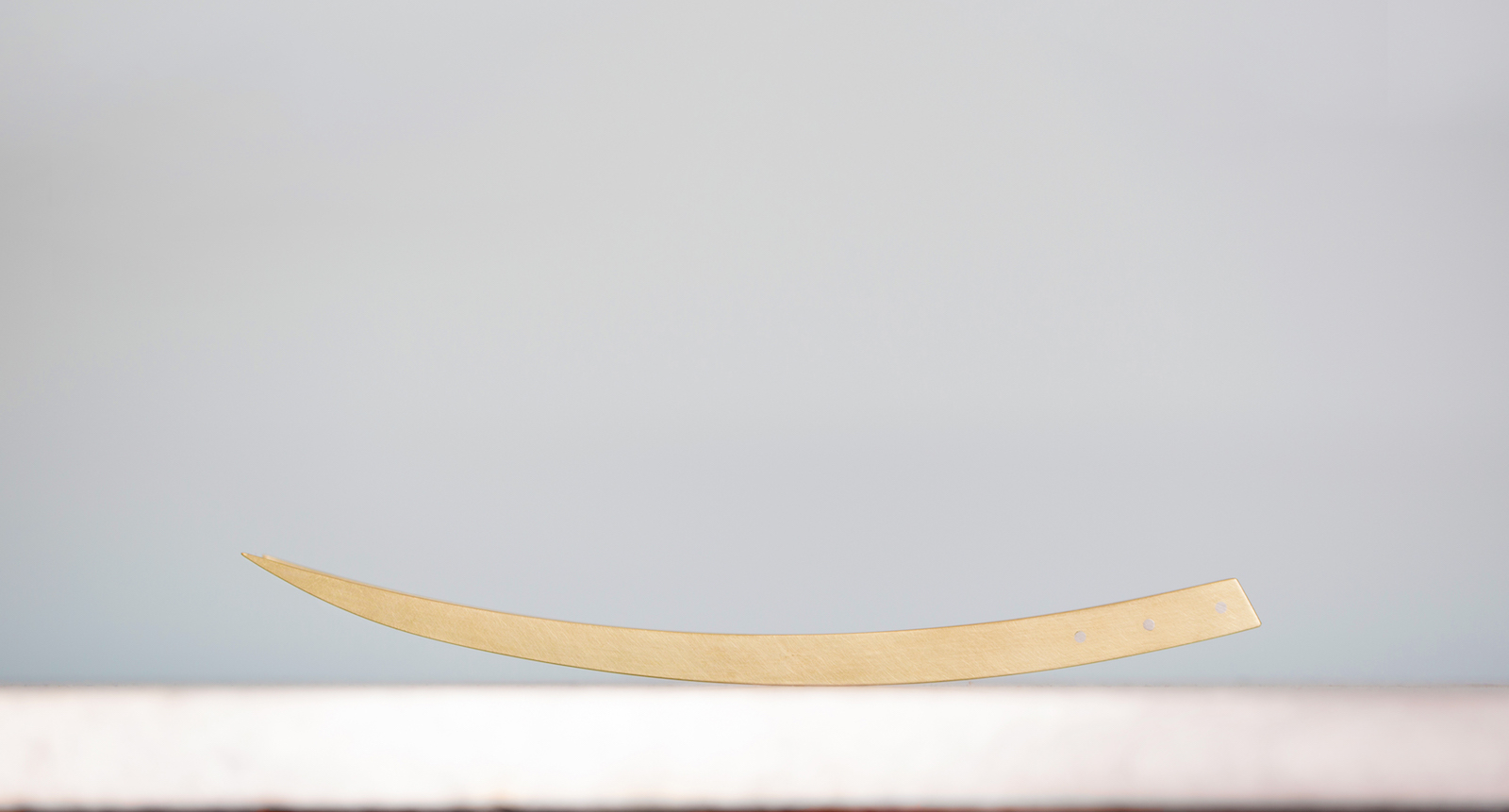Five years ago, designer and chef Ivan Zidar noticed small pools of seawater trapped in between rocks at the shoreline. As the sun shone brighter, tiny crystalline structures emerged from the evaporating tide pools—sea salt appeared in its natural, unmitigated beauty. Witnessing this natural process sparked the idea for a portable saltworks inspired by traditional methods for harvesting sea salt and laid the foundation for BOIR, an artisan tableware collection.

Meaning “to boil” in a romance language once spoke in their native Croatia, BOIR is Zagreb-based husband and wife design team Ivan Zidar and Vlatka Leskovar-Zidar. Their first product, SAL⊥, is a tabletop saltworks that asks users to “harvest” salt using a T-shaped tool that is reminiscent of the simoussi, rakes used to manage the shallow clay ponds and salt marshes of traditional salt production.
Sea salt has been produced around the Mediterranean for millennia and the region is one of the few places that continues to produce salt through this manual, largely artisanal process. These salt works also play an essential role in coastal ecosystems where they serve as essential habitats for a diversity of waterfowl and coastal flora.

Launched during London Design Festival, SAL⊥ is a ceramic plate ensconced in a wooden holder, shipped with Adriatic brine from Saltworks Nin in Croatia. On a sunny day, one can leave the ceramic vessel in the sun for an hour to evaporate the brine; alternatively, you can heat the brine in the vessel in the oven for 25 minutes at 100 °C (~200 °F). Once the crystal pattern appears, the metal T-shaped tool can be used to “harvest” the sea salt—a meditation and performance for the table.
We spoke with Vlatka about the development of SAL⊥ and the ways that their project hopes to preserve and map regional saltworks through the intimacy and beauty of their tabletop salt well.


MOLD: What is the process of preparing the brines?
Vlatka: Traditional sea salt production in the Mediterranean goes through five stages—we’ve studied them at the ancient saltworks along the Croatian Adriatic coast. During the first four stages, the water in salt pans evaporates during the long sunny summer days. During the fifth stage the brine, highly concentrated seawater, is ready to form salt crystals. We collaborate with the saltworks to harvest the brine. The bottled brine accompanies our portable saltworks. We take naturally produced brine from the sea salt creation process just before the salt crystallizes and is usually treated with bleaching agents. In SAL⊥, the brine continues the journey to becoming salt naturally, without losing any of its unique properties.
A lot of the finest restaurants already collaborate with local saltworks, so SAL⊥ fits perfectly into the supply chains, enabling restaurants to get the best ingredients.

What are some of the unique properties of the Adriatic brine from Saltworks Nin, currently being distributed with SALT?
While most of the sea salts available on the market are bleached and processed, the salt created in SAL⊥ keeps its authentic taste because all of the minerals and oligo-elements are left untouched. The Mediterranean Sea salt is extremely rich with minerals and oligo-elements. There are 80 of them and they disappear during the industrial salt processing. Sea salt made in our portable saltworks preserves all the oligo-elements. Nin 28 Bé° contains iodine from the algae which enables proper functioning of the thyroid gland, bromine, which is essential to the nervous system, and potassium, which helps concentration and mental activity. The name comes from the Baumé scale, used to measure the density of liquids.

What might mapping saltworks across the Mediterranean teach us about production, flavor and regional biodiversity?
The mapping raises awareness on the natural salt production process which has been used in the Mediterranean from antiquity. Traditional saltworks have played a crucial role for local economies, and even salt itself was once used as currency. In the last century, many of saltworks have closed or been repurposed due to the lower cost of industrial salt production.
Traditional saltworks have been producing salt for centuries—the secrets of production were carried from one generation to another. That’s why every traditional saltworks has its own slightly different know-how which results in different salt qualities.

The biggest differences in flavor come from rich regional biodiversity and seawater properties across the Mediterranean. For example, the salts from Nin saltworks in Croatia and Cervia saltworks in Italy are very different, even though they are both located in the northern part of the Adriatic, some 200 km away from each other. Local algae and chemical properties of the seawater cause the Nin salt to have intense salinity, while Cervia salt has a distinctively sweet flavor, because it consists of almost pure sodium chloride, without other chlorides that can give it a bitter taste.
Traditional saltworks and salt marshes have also been an important habitat for waterbirds. The disappearance of traditional saltworks is not only connected with losing culinary traditions but also affects the biodiversity of the Mediterranean since the birds have fewer places to feed and lay eggs.

